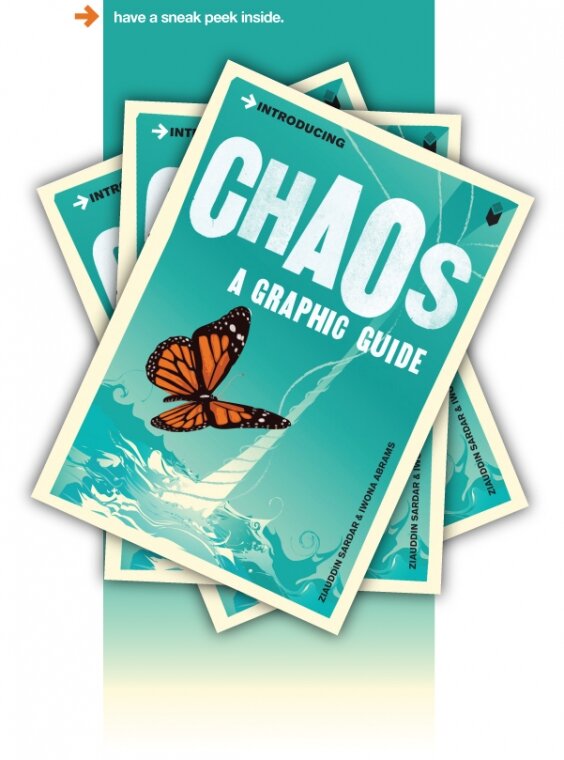Yesterday, synchronicity led me to a great little book at the library. The book is called Chaos: A Graphic Guide.
 This fantastic and short book explains Chaos Theory.
This fantastic and short book explains Chaos Theory.
The book suggests that this is a relatively new scientific discipline – however it does a decent job of pointing out several historical societies that believed strongly in the idea of chaos such as the yin and yang principles of Chinese thought. For example, if there is not balance between the two, chaos may ensue.
It’s more like a resurgence of this mode of thought, or concept, or discipline. And it combines mathematics, physics and philosophy in exploring dynamic systems.
As you can see on the cover, the book portrays the classic cliché: if a butterfly flaps it wings in the Amazon can it cause a tornado in Texas?
Yet, in less words than some of my blathering long posts – it gives a marvelous summary.
Why is Chaos exciting?
It connects our everyday experiences to the laws of nature by revealing the subtle relationships between simplicity and complexity and between orderliness and randomness.
It presents a universe that is at once deterministic and obeys the fundamental physical laws, but is capable of disorder, complexity and unpredictability.
It shows that predictability is a rare phenomenon operating only within the constraints that science has filtered out from the rich diversity of our complex world.
It opens up the possibility of simplifying complicated phenomena.
It combines imaginative mathematics with the awesome processing power of modern computers.
It casts doubt on the traditional model-building procedures of science.
It shows that there are inherent limits to our understanding and predicting the future at all levels of complexity.
The authors suggest that chaos theory has begun to become a household name. Some of the factors they suggest:
- Incredible computing power that is enabling researchers to perform billions of complex calculations in seconds;
- Utilizing some of this power to assist scientific interest in unpredictable (i.e. chaotic), irregular phenomena such as weather, epidemics, cell metabolism, changing populations of animals (e.g. salmon), rise and fall of civilizations, and even nerve impulses; and
- the emergence of non-Euclidean geometry (Euclidean geometry is the kind we learn in school – predictable, provable and so on) such as the study of fractals and fractal geometry (for example the expansion of cities).
Yesterday, I was reading another curious book on the new marketplace, new marketing, and the likes. Crowdsourcing: Why the power of the crowd is driving the future of business by Jeff Howe. Howe is a contributing editor at the magazine Wired.
One of the stories that Howe tells is about the SETI (Search for Extraterrestrial Intelligence) project at the University of California Berkeley. This project has been ongoing for over thirty years and was made famous by the 1997 movie Contact. The project utilizes data from huge radio telescopes. The telescopes can monitor radio waves that constantly bombard Earth’s atmosphere. The project analyzes these signals looking for anomalies that might point to intelligent life on other planets.
Berkeley had been using huge computers to sift through the data – yet in 1997 some astronomers and computer scientists came up with a crazy idea. Why not recruit the general public to donate their computer time. They devised a system whereby, average folks downloaded a SETI screen saver on to their home computers. Whenever the screen saver kicked in – suggesting the owner was not utilizing the computer – that computer would start to analyze data from the telescopes and then automatically send it back to the main central server at Berkeley.
The goal was to get 100,000 people to sign on. They were a bit more successful. By 2005 over five million computers were subscribed. Calculations suggest over 3 million years of computing time was donated.
They still haven’t found any aliens. However, as Howe points out: “it has conclusively succeeded in proving that the many can work together to outperform the few… and the intense power of networks.” Howe states the central premise of his idea of Crowdsourcing is operating on the same principle:
except that it uses the network to harness individual people’s spare cycles – the time and energy left over after we’ve fulfilled our obligations to employers and family.
There are some other neat stories from his book that I’ll elaborate on in another post.
